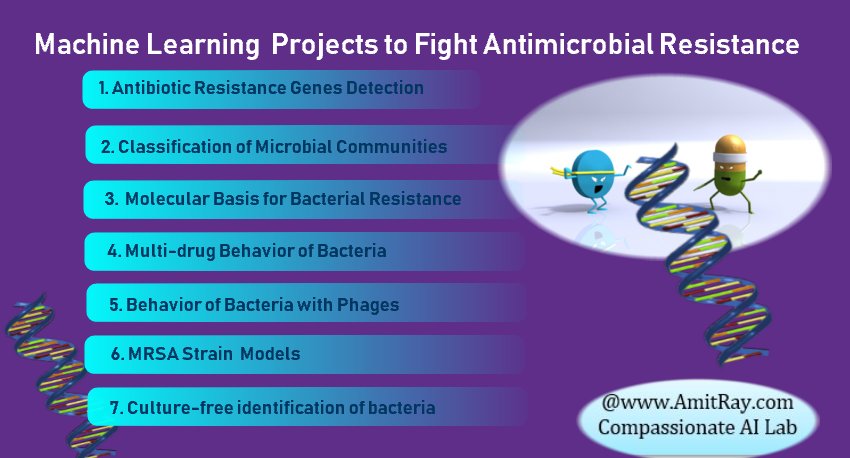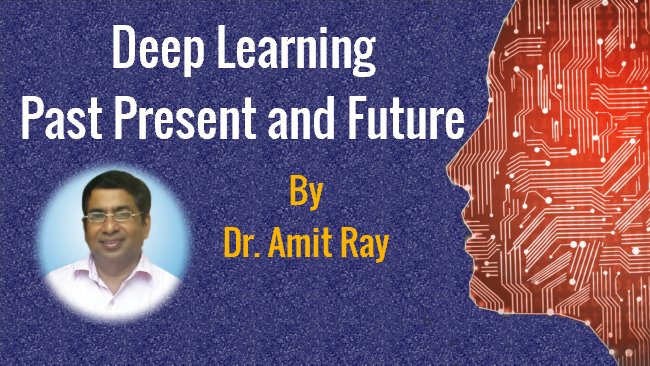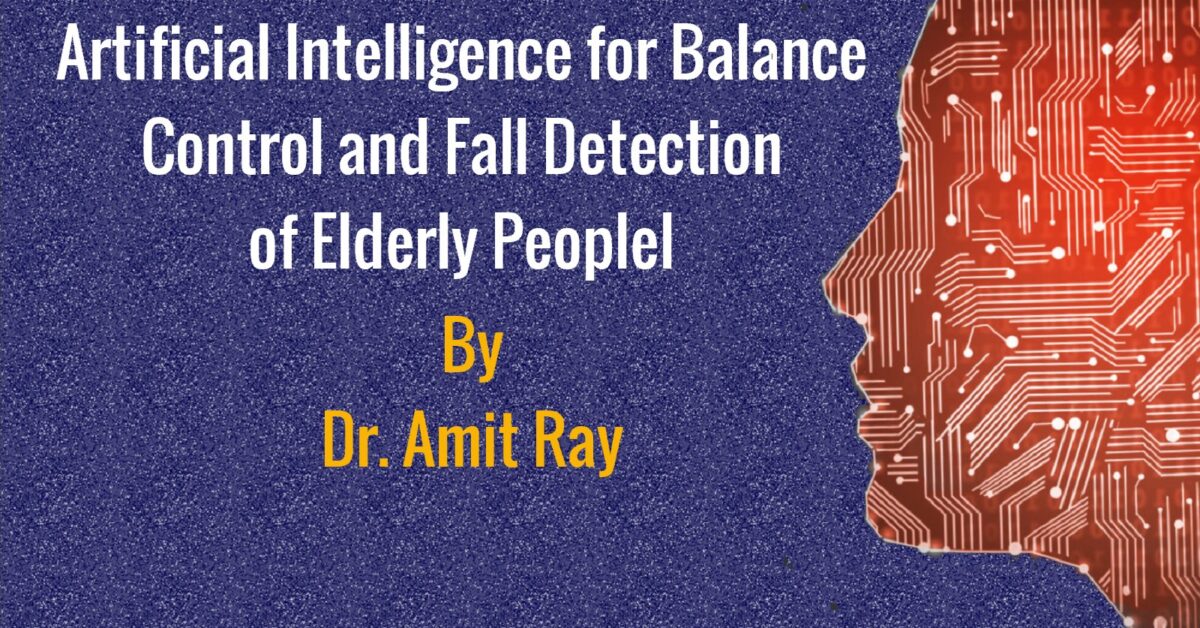Artificial Intelligence
Five Key Benefits of Quantum Machine Learning
Five Key Benefits of Quantum Machine Learning
Here, Dr. Amit Ray discusses the five key benefits of quantum machine learning.
Quantum machine learning is evolving very fast and gaining enormous momentum due to its huge potential. Quantum machine learning is the key technology for future compassionate artificial intelligence. In our Compassionate AI Lab, we have conducted several experiments on quantum machine learning in the areas of drug-discovery, combating antibiotic resistance bacteria, and multi-omics data integration.
We have realized that in the area of drug design and multi-omics data integration, the power of deep learning is very much restricted in classical computer. Hence, with limited facilities, we have conducted many hybrid classical-quantum machine learning algorithm testing at our Compassionate AI Lab.
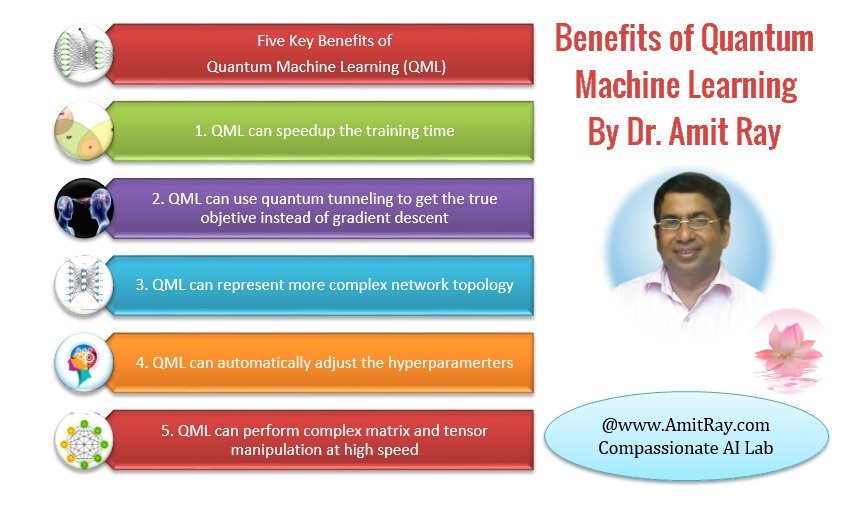
Five Benefits of Quantum Machine Learning
What’s Holding Back Machine Learning in Healthcare
What is holding back the large scale implementation of machine learning systems in healthcare and precision medicine? In this article Dr. Amit Ray, explains the key obstacles and challenges of implementing large-scale machine learning systems in healthcare. Dr. Ray argued that lack of deeper integration, incomplete understanding of the underlying molecular processes of disease it is intended to treat, may limit the progress of implementing large-scale machine learning based reliable systems in healthcare. Here, nine obstacles of present day machine learning systems in healthcare are discussed.
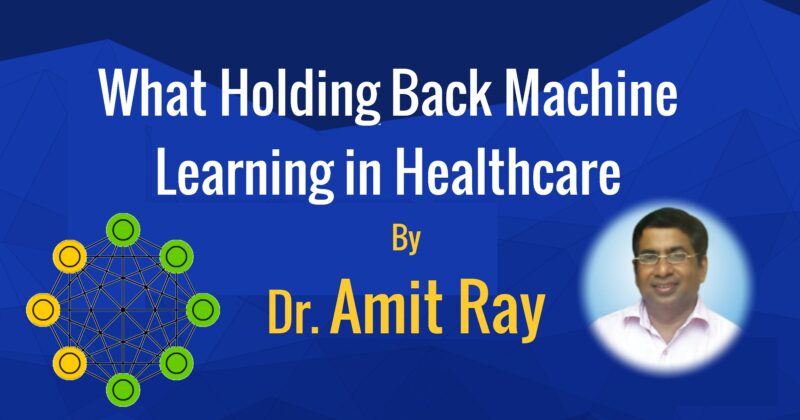
Machine Learning in Healthcare
Recently, machine learning algorithms, especially deep learning has shown impressive performance in many areas of medical science, especially in classifying imaging data in different clinical domains. In academic environment, Deep learning and Reinforcement learning methods of Artificial Intelligence (AI) has shown tremendous success in numerous clinical areas such as: Omics data integration (such as genomics, proteomics or metabolomics), prediction of drug-disease correlation based on gene expression, and finding combinations of drugs that should not be taken together. Deep learning is very successful in predicting cancer outcome based on tumour tissue images. Machine learning are used for medical decision support systems for ICU and critical care. Artificial Intelligence in Healthcare Current Trends discusses the current status of AI in healthcare. Read More »What’s Holding Back Machine Learning in Healthcare
Roadmap for 1000 Qubits Fault-tolerant Quantum Computers
How many qubits are needed to outperform conventional computers? How to protect a quantum computer from the effects of decoherence? And how to design more than 1,000 qubits fault-tolerant large-scale quantum computers? These are the three basic questions we want to deal in this article.
Qubit technologies, qubit quality, qubit count, qubit connectivity and qubit architectures are the five key areas of quantum computing. In this article, we explain the practical issues of designing large-scale quantum computers.
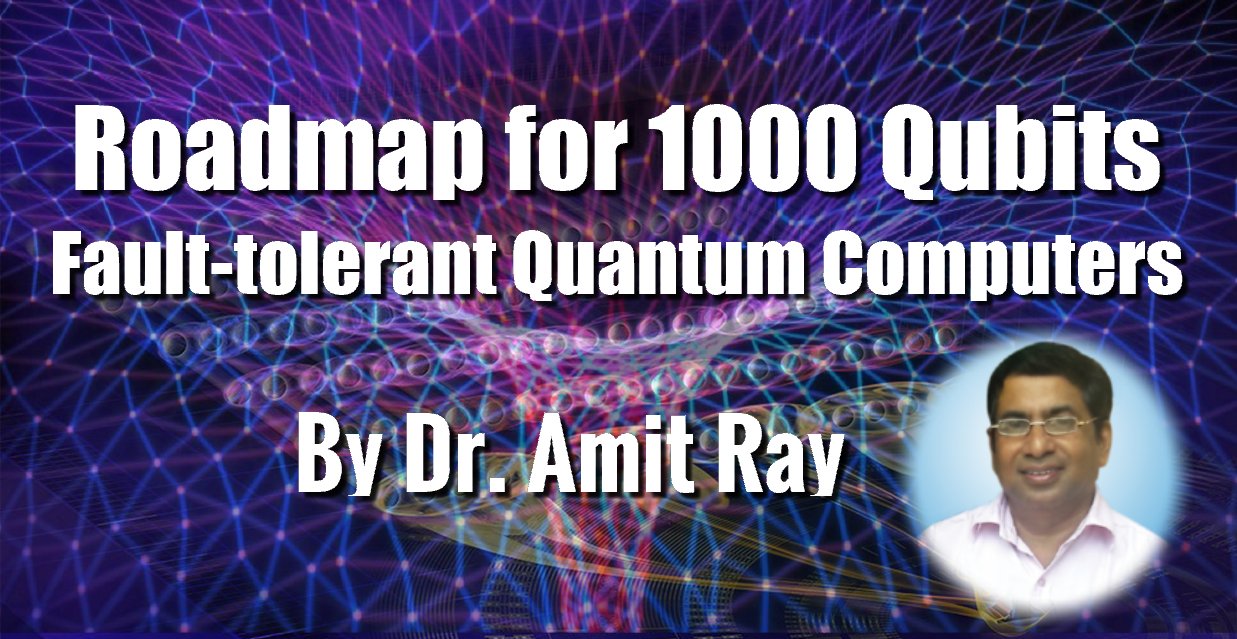
Read More »Roadmap for 1000 Qubits Fault-tolerant Quantum Computers
Quantum Computing with Many World Interpretation Scopes and Challenges
Probably you know the concept of many world interpretation of quantum mechanics. In this article, we will explain how this concept can be used in quantum computing.
Many scientist believe that Many World Interpretation (MWI) of quantum mechanics is self-evidently absurd for quantum computing. However, recently, there are many groups of scientist increasingly believing that MWI has the real future in quantum computing, because MWI can provide true quantum parallelism. Here, I briefly discuss the scopes and challenges of MWI for future quantum computing for exploration into the deeper aspects of qubits and quantum computing with MWI.
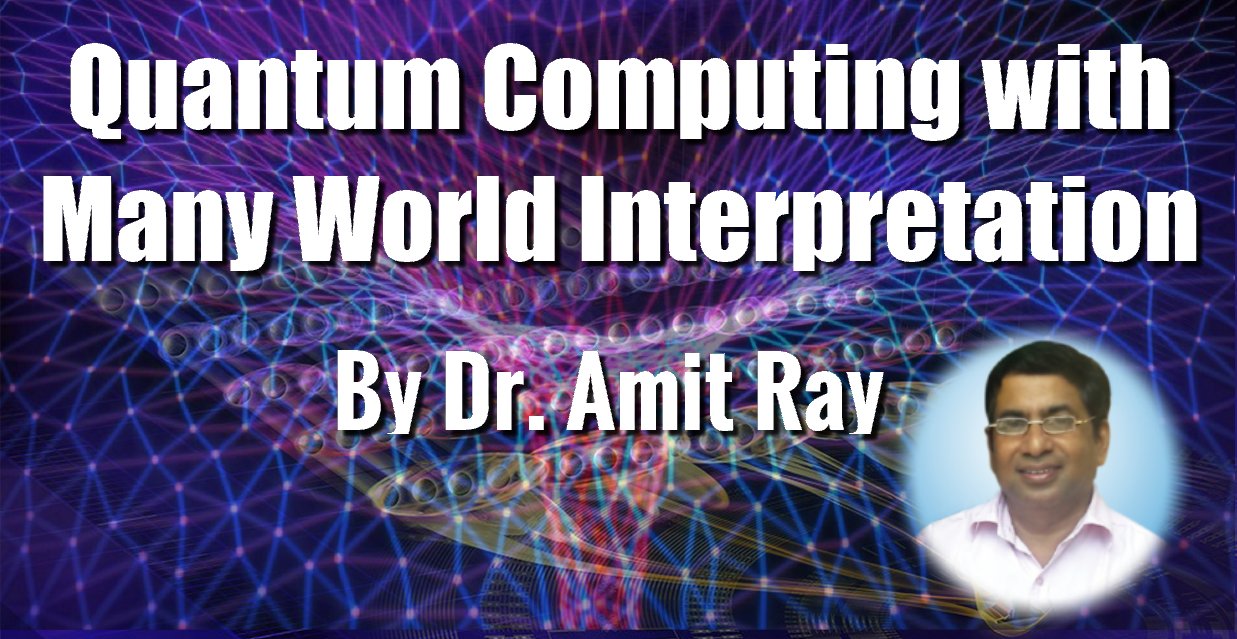
This tutorial is for the researchers, volunteers and students of the Compassionate AI Lab for understanding the deeper aspects of quantum computing for implementing large-scale compassionate artificial intelligence projects.
Read More »Quantum Computing with Many World Interpretation Scopes and Challenges
Deep Learning Past Present and Future – A Systematic Review
7 Limitations of Molecular Docking & Computer Aided Drug Design and Discovery
7 Limitations of Molecular Docking & Computer Aided Drug Design and Discovery
Over the past decades, molecular docking has become an important element for drug design and discovery. Many novel computational drug design methods were developed to aid researchers in discovering promising drug candidates. In the recent years, with the rapid development of faster architectures of Graphics Processing Unit (GPU)-based clusters and better machine algorithms for high-level computations, much progress has been made in areas such as scoring functions, search methods and ligand-receptor interaction for living cells and other approaches for drug design and discovery.
A large number of successful applications have been reported using a variety of docking techniques. However, despite their success in academic environment for concept validation, their real life application is very limited. There are many obstacles and number of issues remain unsolved. In this article Dr. Amit Ray, explains the key obstacles and challenges of molecular docking methods for developing efficient computer aided drug design and discovery (CADD) methods. Dr. Ray argued incomplete understanding of the underlying molecular processes of the disease it is intended to treat may limit the progress of drug discovery. Here, the seven limitations of present CADD methods are discussed.
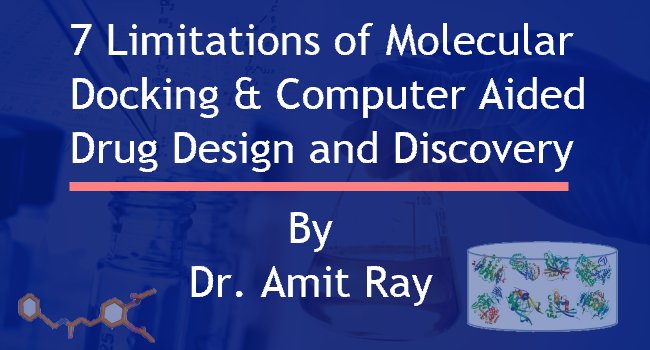
In vivo, In vitro and In silico: Experimentation for Drug Discovery
Experimentation for Drug Discovery pathways are classified into three groups: in vivo, in vitro and in silico. … Read more..
Artificial Intelligence for Balance Control and Fall Detection of Elderly People
Balance control in elderly people is one of the key issues of old age. Artificial Intelligence can play a big role to solve this issue. In this research work, we demonstrate the application of machine learning techniques for posture alignments and the control of the body center of mass for disable people.
Designing automated balance control system for elderly people is one of the key project of our Compassionate AI Lab. Here, Dr. Amit Ray discuses about one of the recent project of AI using deep learning algorithms for automatic balance control of elderly people. He explains how machine learning algorithms can be used to study and improve the dynamical properties of postural stability of elderly people. The project focuses on how image recognition, human-body joint dynamics, and path navigation methods of artificial intelligence can be used to eliminate the imbalance, fall and injury of elderly people or for physically challenged people.

Compassionate Artificial Intelligence can be used for helping elderly people in many ways. Here, we discuss about one of our recent project of using AI & deep learning techniques for automatic balance control. The machine learning algorithms are used to improve dynamical properties of postural stability. In this project AI based machine learning algorithms are used to find the insights into the person specific postural strategies for older adults in order to adapt to the postural challenges during sleeping, standing, turning and walking. To study the body movement behavior of elderly people accurately, it is necessary to observe and record their movement trajectory and joint movements quantitatively and precisely in three dimensions.Read More »Artificial Intelligence for Balance Control and Fall Detection of Elderly People
Quantum Computing Algorithms for Artificial Intelligence
Quantum Computing Algorithms for Artificial Intelligence
Dr. Amit Ray explains the quantum annealing, Quantum Monte Carlo Tree Search, Quantum algorithms for traveling salesman problems, and Quantum algorithms for gradient descent problems in depth.
This tutorial is for the researchers, developers, students and the volunteers of the quantum computing team of the Sri Amit Ray Compassionate AI Lab. Many of our researchers and students asked me to explain the quantum computing algorithms in a very simplistic term. The purpose of this article is to explain that.

Earlier we have discussed Spin-orbit Coupling Qubits for Quantum Computing and the foundations of Quantum computing and artificial intelligence. This article is to explain the foundation quantum computing algorithms in depth in a simplistic way. Here we explained the concepts of quantum annealing, Quantum Monte Carlo Tree Search, quantum algorithms for traveling salesman problem and Quantum algorithms for gradient descent problems. Read More »Quantum Computing Algorithms for Artificial Intelligence
Spin-orbit Coupling Qubits for Quantum Computing and AI
The Power of Spin-orbit Coupling Qubits for Quantum Computing
Here, Dr. Amit Ray discusses the power, scope, and challenges of Spin-orbit Coupling Qubits for Quantum Computing with Artificial Intelligence in details. Quantum computing for artificial intelligence is one of the key research project of Compassionate AI Lab. We summarize here some of the recent developments on qubits and spin–orbit coupling for quantum computing.
In digital computing, information is processed as ones and zeros, binary digits (or bits). The analogue to these in quantum computing are known as qubits. The qubits are implemented in nanoscale dimensions, such as spintronic, single-electron devices and ultra-cold gas of Bose-Einstein condensate state devices. Manipulation and measurement of the dynamics of the quantum states before decoherence are the primary characteristic of quantum computing.

Involving electron spin in designing electronic devices with new functionalities, and achieving quantum computing with electron spins is among the most ambitious goals of compassionate artificial superintelligence – AI 5.0. Utilizing quantum effects like quantum superposition, entanglement, and quantum tunneling for computation is becoming an emerging research field of quantum computing based artificial intelligence.
Read More »Spin-orbit Coupling Qubits for Quantum Computing and AI
- « Previous
- 1
- 2
- 3
- 4
- Next »
